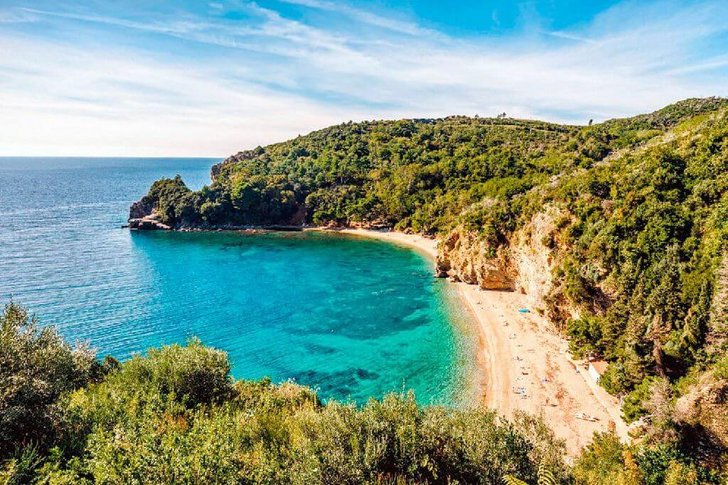Montenegro is a small country that can be traveled in one day. But many tourists come here again and again. Natural attractions with pristine beauty, the ruins of ancient buildings, ancient fortresses and religious buildings - it is impossible to have time to see everything during a standard vacation.
The pride of Montenegro is its nature. There are several national parks in the country, a visit to which should be a must for any traveler. It won't be hard to get to them. This can be done both as part of an excursion group, and independently by renting a car. The mild climate of the country, the warm sea and clean air will make your vacation in Montenegro unforgettable.
What to see and where to go in Montenegro?
The most interesting and beautiful places to visit, photos and a brief description.
- Bay of Kotor
- Sveti Stefan
- Old town of Budva
- Citadel in Budva
- Old town of Kotor
- Fortress of St. John (Kotor)
- Walled city Stary Bar
- Old town of Ulcinj
- Fort Mamula
- Dancer from Budva
- Palace of King Nikola (Cetinje)
- Maritime Museum (Kotor)
- Lovcen
- Mausoleum of Negosh
- Island of Gospa od Skrpjela (Perast)
- Island of Saint George (Perast)
- Island of St. Nicholas (Budva)
- Monastery Ostrog
- Cathedral of Saint Tryphon (Kotor)
- Cetinje Monastery
- Savina Monastery (Herceg Novi)
- Moraca Monastery
- Biogradska Gora
- Skadar lake
- Durmitor
- Tara river canyon
- Crno Jezero
- Bobotov Cook
- Lipskaya cave
- Blue grotto
- Waterfall Niagara (Podgorica)
- Dzhurdzhevich Bridge
- Millennium Bridge (Podgorica)
- Porto Montenegro (Tivat)
- Mogren beach (Budva)
Bay of Kotor
Incredibly beautiful bay of the Adriatic Sea, it includes several bays. Some geographers call the bay a fjord, which is of tectonic origin. The shores of the bay were settled by Illyrians, Romans and Greeks over three centuries BC. Modern tourist centers are formed around the preserved historical buildings. Boat trips along the bay are especially popular among tourists.

Sveti Stefan
The resort, located on a small island, is connected to the mainland by a narrow natural isthmus. Of the sights, there are three churches - the name of St. Stephen, Alexander Nevsky and the Cathedral of the Assumption of Our Lady. Free access for non-hotel guests on the island is limited. The tourist infrastructure in the village, next to the island, is highly developed. For tourists there are luxurious villas and guest houses. The beach near Villa Milocer is interesting with small pink-red pebbles.
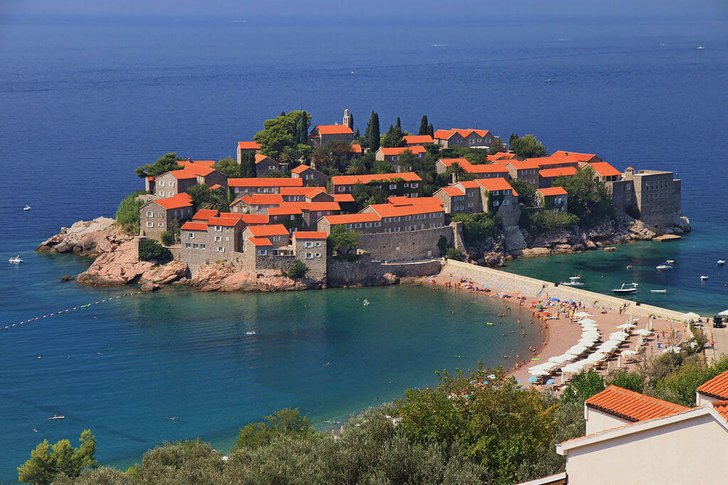
Old town of Budva
Everything that Montenegro is famous for is here. Venetian and Mediterranean architecture. Museums and churches among cozy residential buildings with brick-colored roofs. The history of Budva began in the 5th century BC. Must-see historical sites are the citadel, the city walls, the archaeological museum, the ancient eastern gate, the antiques market and the modern art gallery, the Roman square and religious buildings.

Citadel in Budva
A large and impregnable fortress on the Adriatic coast. The fortress was built in the 15th century on the rocky shores. Inside, the remains of the barracks and the ruins of an ancient church have been preserved. On the stone walls you can see the outlines of ancient bas-reliefs. Festivals and concerts are held in the courtyard of the citadel. The observation platform of the fortress offers a beautiful view of the historical part of the city.
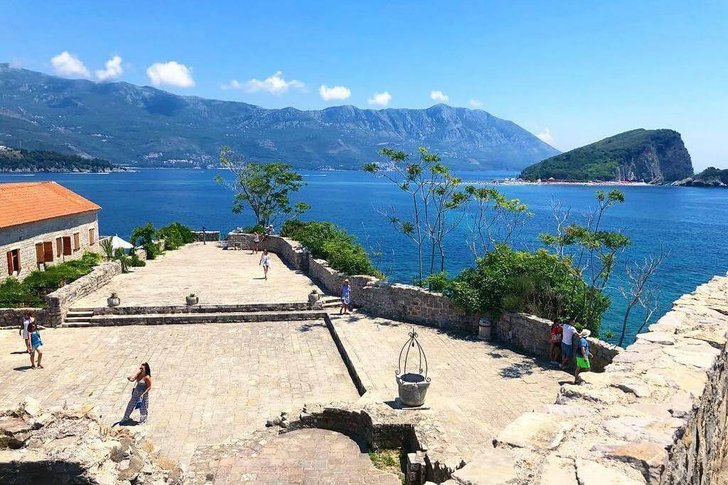
Old town of Kotor
You can walk this place from end to end in 20 minutes. However, this is possible only if we neglect the inspection of ancient buildings, which are literally located here at every turn. Cobbled narrow streets create a real labyrinth. The city began to be built up in the XII century and many historical and architectural monuments have survived to this day - the fortress of St. Luke, the Cathedral of St. Tryphon, the Armory Square.
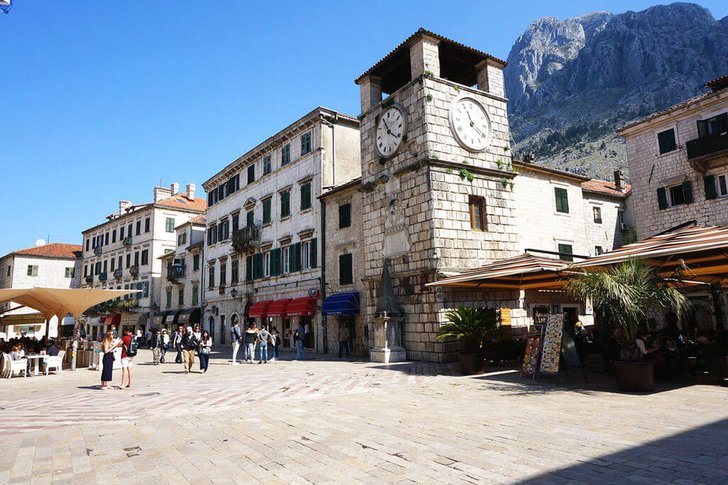
Fortress of St. John (Kotor)
An ancient building on a mountainside, its construction began in the 9th century. The winding fortress wall in some places reaches a thickness of 20 meters. Even 300 Turkish ships could not overcome this defense. The observation deck of the fortress is located at an altitude of 284 meters, it offers a magnificent view. You can climb it, as well as the small church of St. John, along a narrow path of 1400 steps.
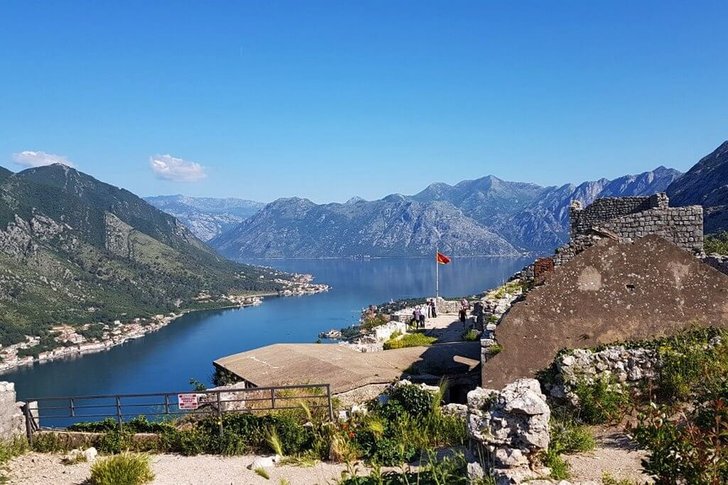
Walled city Stary Bar
The ancient building is located on the cliff of Mount Rumia. Of the 240 buildings of the city, only a few have survived in their original form. Most of them are ruins. The Omerbasic mosque built in 1662 is well preserved. Of interest are the ruins of churches - St. Veneranda and St. Catherine, as well as the Cathedral of St. George. The most important attraction of the Old Bar are the gates of the X-XI century.

Old town of Ulcinj
Its history began in the 5th century with the construction of a fortress. Since then, this place has repeatedly passed from hand to hand, changing rulers. The architecture of the old city is a mixture of different architectural styles from different eras. The church was converted into a mosque, and a small square where slaves were traded is now a city museum. The palaces of the Courts of Balsic and the Palazzo Venezia currently house hotels.
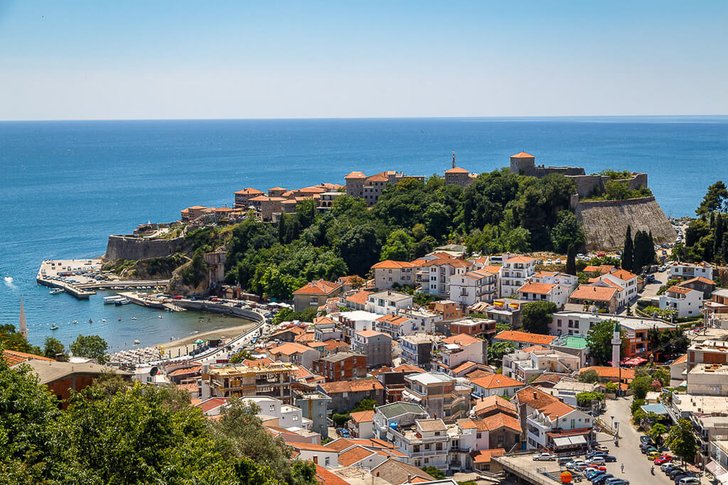
Fort Mamula
The island-fortress is located in the waters of the Adriatic Sea. The diameter of the structure is 200 meters, the height of the walls reaches 16 meters. You can get to the fort via a suspension bridge. The fort itself and its interior buildings are well preserved. Gates, loopholes, walls are made of durable rough stone. A spiral staircase leads to the observation deck. From the top there is a beautiful view of the fortress itself and the waters of the sea around.

"Dancer from Budva"
It represents the figure of a gymnast, who froze in an elegant pose on a rocky sharp stone. The bronze sculpture is located next to Mogren Beach and is considered an unofficial symbol of the city. The shots of a lonely figure of a dancer against the backdrop of a city or the sea are very beautiful, but tourists in search of a better angle should be careful. The probability of falling into the water and getting hurt on the rocks is very high.
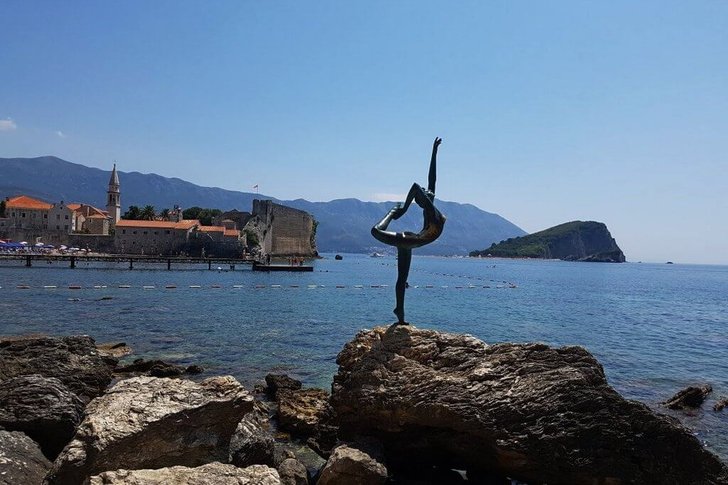
Palace of King Nikola (Cetinje)
The building was erected in 1867, it acquired its modern look in 1910 after reconstruction. From the outside, the palace looks rather modest. There is a museum inside. The exposition consists of items related to the royal family. The walls are covered with silk, the ceilings are decorated with stucco, the parquet floors are covered with carpets. Many valuable exhibits from different eras have been preserved in the palace.

Maritime Museum (Kotor)
Dedicated to the history of navigation in the Bay of Kotor. Located in the building of an old baroque palace of the XVIII century. Unusual exhibits are exhibited at the exhibitions of the museum. Models of ships, portraits of sailors, navigational instruments, captured weapons, ship's logs and even the remains of sunken ships. Cannons of the 18th century are installed at the entrance. A visit to the museum will be of interest to all categories of tourists.
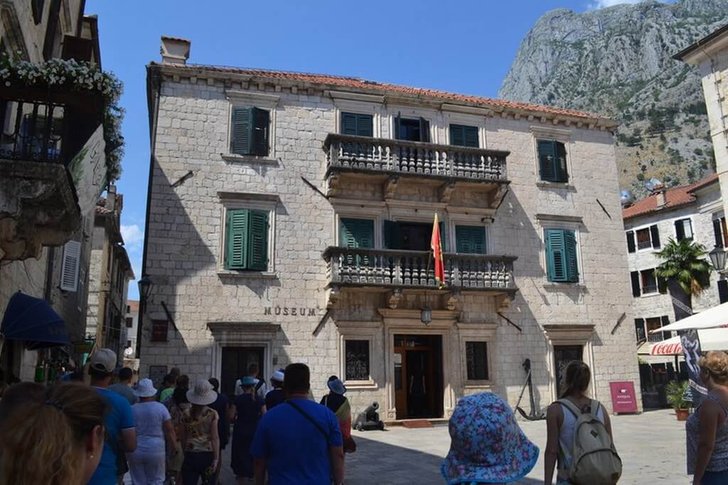
Lovcen
National park on the territory of the mountain range of the same name. The area of the park is 62 km². Mount Lovcen is a natural symbol of Montenegro. The highest peak is at an altitude of 1749 meters. It offers a beautiful view of almost the entire country and the Adriatic Sea. In addition to its unique nature, Lovcen is famous for its national and historical monuments. At the top of the mountain is the tomb of the ruler of Montenegro - Peter II Petrovich Negosh.
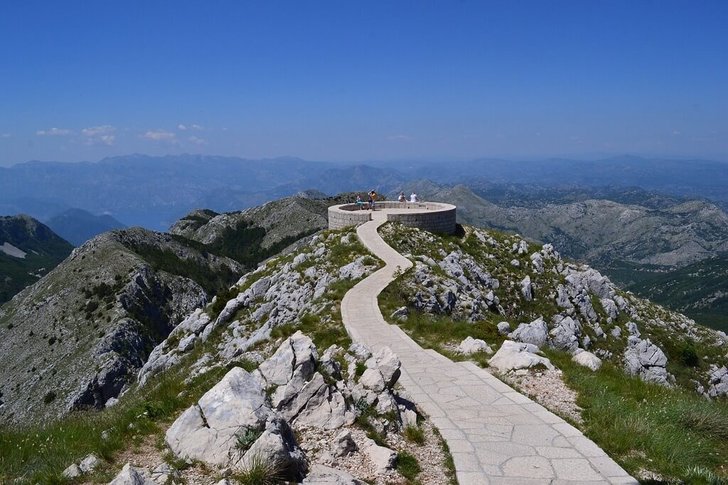
Mausoleum of Negosh
Located at an altitude of 1650 meters on Mount Lovcen. A staircase leads to the mausoleum, part of which passes through a tunnel. The tomb with the sarcophagus of an outstanding reformer was built in the 70s of the XX century, on the site of a chapel, the main one by the ruler himself. The roof of the building is covered with gold, at the entrance there are statues of Montenegrins. Inside there is a statue of Peter II Petrovich Negosh. A visit to the mausoleum of a politician, poet and philosopher is popular with tourists.
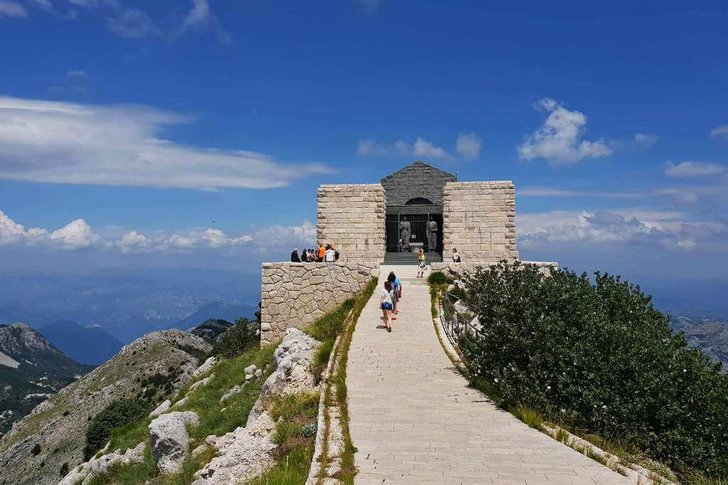
Island of Gospa od Skrpjela (Perast)
The name of the island in the Bay of Kotor is translated as "Madonna on the Reef". It is located opposite the city of Perast. The main plateau of the island is man-made, for 200 years every ship passing by had to drop a stone near the reef. Now it houses the Church of the Mother of God. The style of the building is Byzantine, it is decorated with rich paintings, works of art, gold and silver plates.

Island of Saint George (Perast)
Located near the coast of the city of Perast. A Benedictine abbey was founded on it, according to some sources, as early as the 9th century. For several centuries, noble persons were buried in the cemetery of the monastery. The graves of the cemetery, like the island itself, are under the canopy of cypresses. From the shore, it looks a little gloomy and mysterious, which gives rise to many legends among the local population. It is believed that treasures and jewels are hidden on the island.

Island of St. Nicholas (Budva)
A large island a kilometer off the coast of Budva. The island is uninhabited, its length is 2 kilometers, of which about 800 meters is the beach area. There are many small coves on the coastline; it will be easy for travelers to find a cozy and deserted place. The vegetation of the island is lush green and inhabited by small animals. You can get there by water taxi. There are cafes and bars on the island.

Monastery Ostrog
Orthodox monastery founded in the 17th century. Located in the mountains, at an altitude of 900 meters. The road to it runs along a narrow and winding mountain serpentine. The monastery consists of two parts. The upper part is located on a protruding rocky cliff. A rocky forest path leads to it from the cells below and the Church of the Holy Trinity. The relics of the monastery are the relics of the lad Stanko and the relics of Bishop Vasily.

Cathedral of Saint Tryphon (Kotor)
Erected in the XII century in honor of the patron saint of sailors of the Bay of Kotor. Currently, the architectural monument belongs to the Catholic community. Orthodox believers have access to the second floor to venerate the holy relics. The building itself is an example of Romanesque architecture. However, the main element of the interior decoration is a canopy with red marble columns, decorated in the Gothic style.
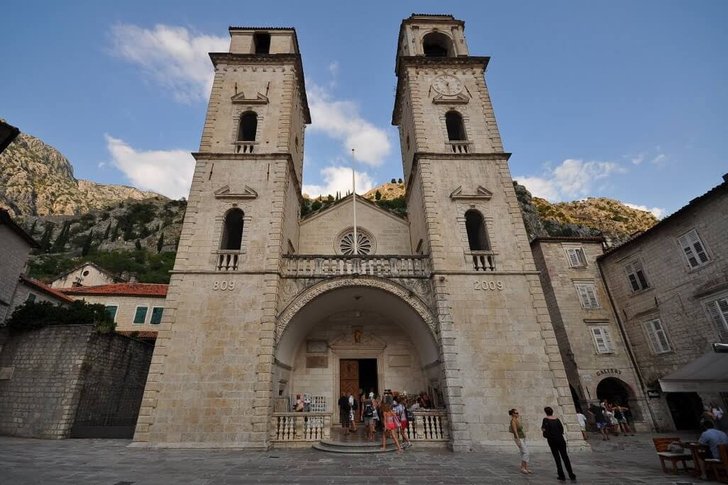
Cetinje Monastery
Founded in 1484. Several times it was destroyed to the ground or burned by Turkish troops, but each time the monastery was restored using old stones. The relics are the relics and robes of saints, most of which were donated to the monastery by the royal family of Russia. The museum of the monastery contains rare manuscripts and printed books of the 13th-19th centuries, robes of metropolitans, banners and church utensils.
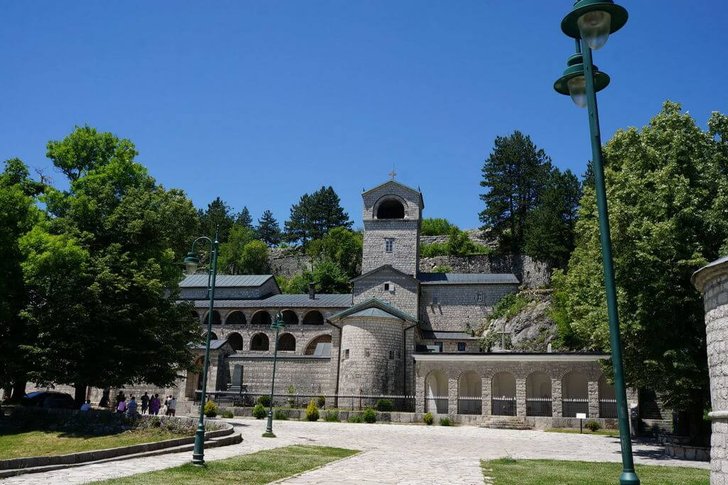
Savina Monastery (Herceg Novi)
Located on the shores of the Bay of Kotor in the middle of a dense forest. The monastery complex includes three churches. The oldest of them, according to some sources, was built in the 11th century. The monastery is rightly proud of its collection of icons. It consists of works by Italian, Russian and Cretan masters. The funds of the library of the monastery store about 5000 manuscripts. A unique exhibit is a handwritten Gospel made in 1375.
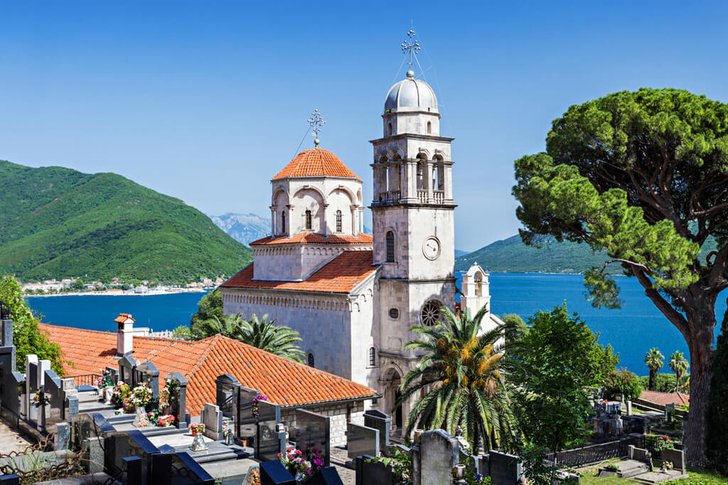
Moraca Monastery
The appearance of the monastery is strict and modest; it was built in the Romanesque style of white stone. But the interior decoration is incredibly rich. Wall painting is considered one of the best in Byzantine and Serbian painting. The frescoes depict the life of the prophet Elijah, as well as the faces of Christ and the Virgin. The monastery was founded in 1252. Partially destroyed and plundered during the raids of Turkish troops. Restored in the 16th century.
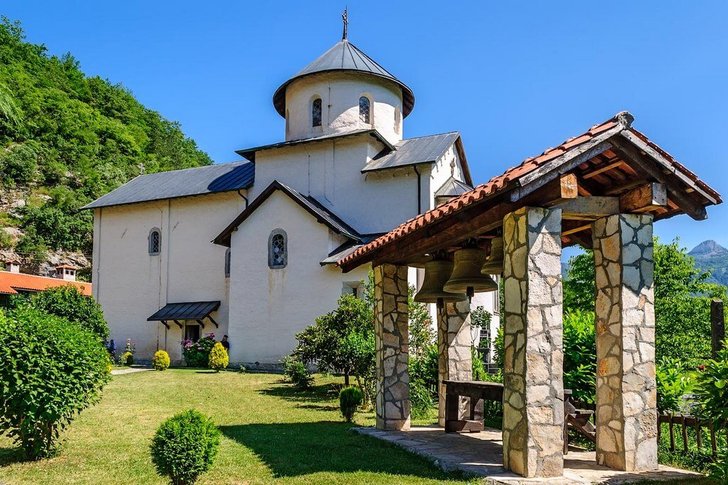
Biogradska Gora
National park, area - 54 km². The landscape of the park is diverse: it includes 1600 hectares. forests, glacial lakes and rivers seething between mountain peaks. 5 lakes of the park are located at an altitude of 1800 meters. The highest point of the park is Chrna Glava peak - 2139 meters. There are trails for visitors through the virgin forest. A walk along them gives an opportunity to appreciate the diversity of fauna and flora of the park.
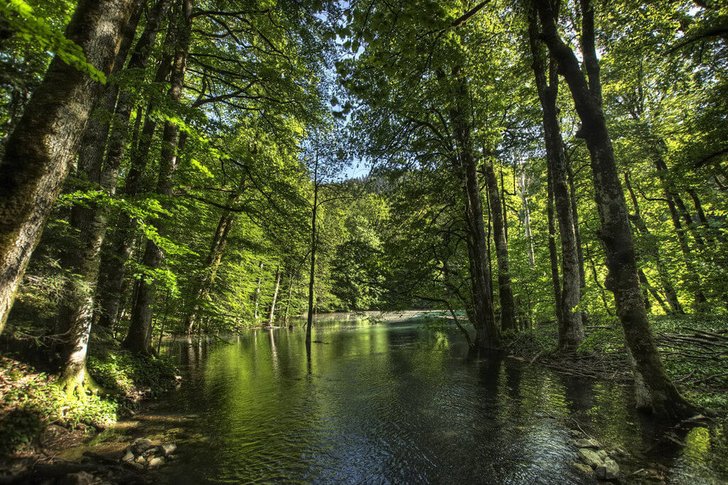
Skadar lake
One of the largest lakes in the Balkans. Skadar Lake is fed by 6 rivers, only one river flows out of the lake, flowing into the Adriatic Sea - Bojana. Walking along the lake to the islands is popular among tourists. The complex usually includes the rental of fishing equipment. A large number of fish live in the lake, a good catch is provided even for novice anglers. Ancient churches, fortresses and monasteries have been preserved on the shores of the lake.

Durmitor
The mountain range that gave the name to the national park. The highest point is Mount Bobotov-Kuk. The park is famous for its landscapes. Mountain rivers flowing in narrow canyons, more than 40 waterfalls, lakes with crystal clear water - the picturesque nature of these places attracts many visitors to the park all year round. In winter, tourists use the ski slopes; in summer, hiking and mountaineering are popular.
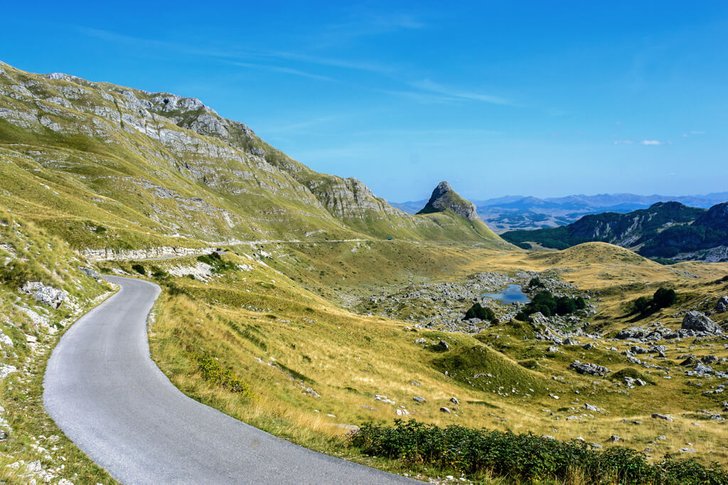
Tara river canyon
Located in the Durmitor National Park. The largest canyon in Europe. Included in the list of objects protected by UNESCO. The length of the canyon is 80 km, the depth is 1300 meters. The waters of the Tara River in the canyon form several picturesque cascades and waterfalls. This place is popular with rafting enthusiasts, especially from May to October. In the 1930s, the Dzhurdzhevich Bridge was built across the canyon at a height of 150 meters.
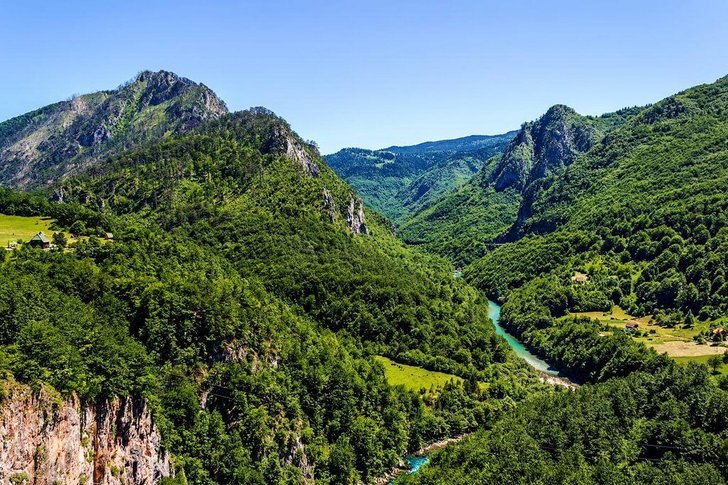
Crno Jezero
Glacial lake on Mount Durmitor. Located at an altitude of 1400 meters. Consists of two lakes connected by a small strait. In summer, it dries up, and Crno Jezero is divided into two reservoirs with different depths. The total length of the lake is 1150 meters. The waters of the lake have a greenish tint. This color is combined with the greenery of the dense forest on the banks, mountains stretch around - such a landscape attracts thousands of visitors to the lake.
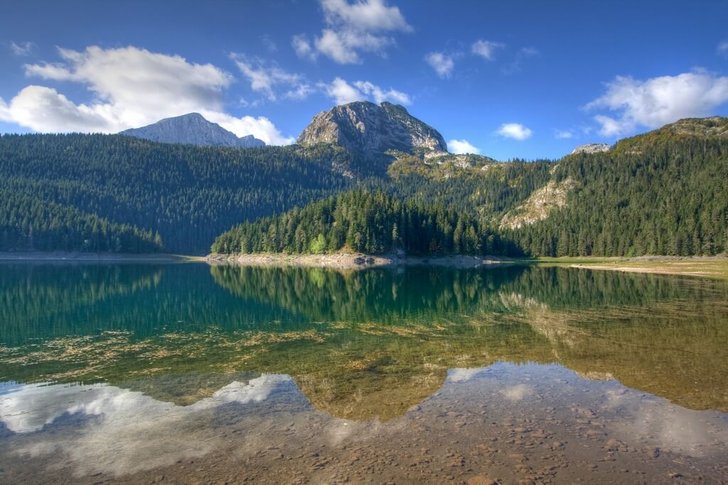
Bobotov Cook
The highest mountain in the Durmitor massif. Despite the impressive height of -2522 meters, climbing it is not of interest to professional climbers. The path leading to the top is gentle, only the length of the path will cause difficulty. The ascent takes on average about 10 hours, so good physical endurance is still necessary. Panoramic views from the top of the ascent are striking in their beauty.

Lipskaya cave
The total length of the cave is 2.5 km. It is a network of tunnels, halls and corridors. They have stalactites and stalagmites, karst deposits, bizarre stone formations, an underground pool. The cave is perfectly prepared for tourists to visit. One of the three entrances has been equipped, lighting has been provided, and walking routes have been laid. They are equipped with stairs, bridges and places to rest.
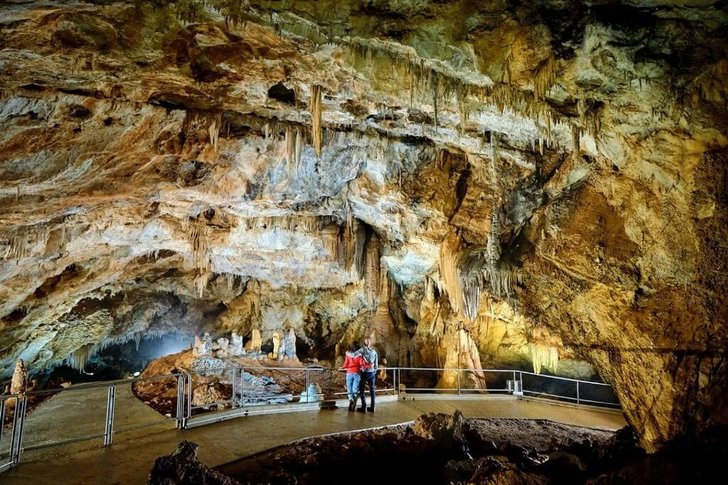
blue grotto
Natural attraction. The area of the cave is about 300 m², the water depth is about 4 meters. This allows boats and boats to sail inside the grotto so that tourists can better appreciate the beauty of this place. The main feature of the grotto is the color of its walls. They acquire a blue tint from the refraction of rays in sunny weather. Local legends say that the treasure of pirates is hidden at the bottom of the grotto.
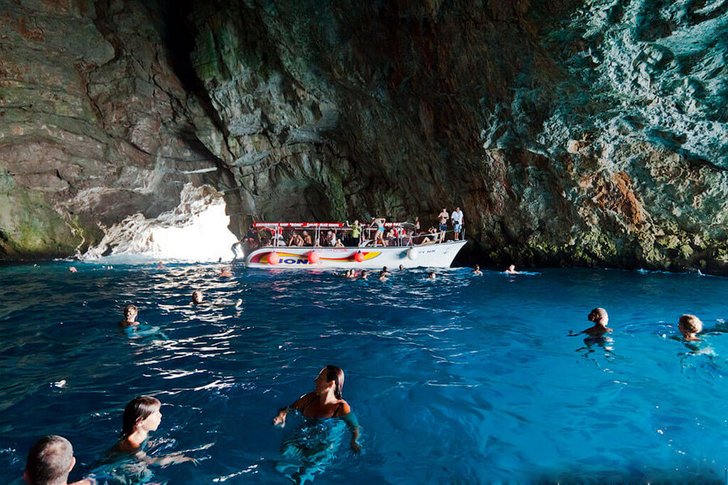
Waterfall "Niagara" (Podgorica)
The waterfall is located on the Tsesna River. It got such a playful name because of its external resemblance to the famous waterfall in the USA. However, the size of "Niagara" in Montenegro is much more modest. Local residents are involved in its creation. They blocked the flow of the river with a dam so that the waters of the river, overflowing through it, formed a waterfall. However, the river bypassed the dam on the side, forming several dozen small waterfalls.
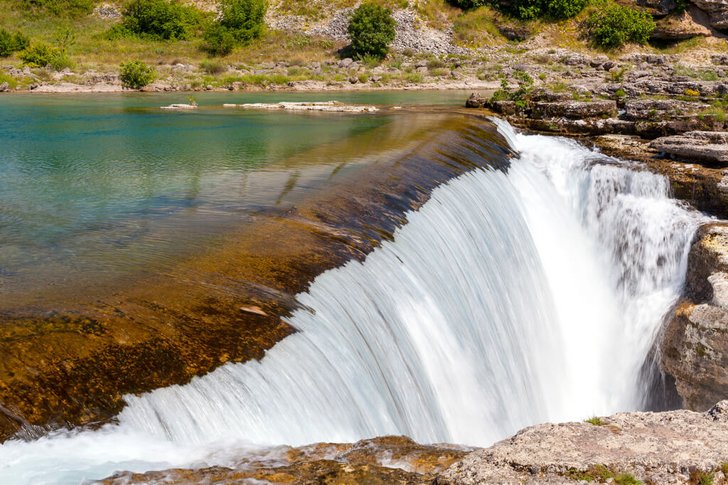
Dzhurdzhevich Bridge
The bridge was laid at a height of more than 150 meters across the canyon of the Tara River. This is one of the highest arch-type road bridges in Europe. The location of the bridge in the picturesque place of the Durmitor park makes it attractive for tourists. Camping areas, shops, hostels are equipped for them. There are zip-line rides and bike rentals. A monument to his engineer Lazar Yaukovich was erected at the entrance to the bridge.
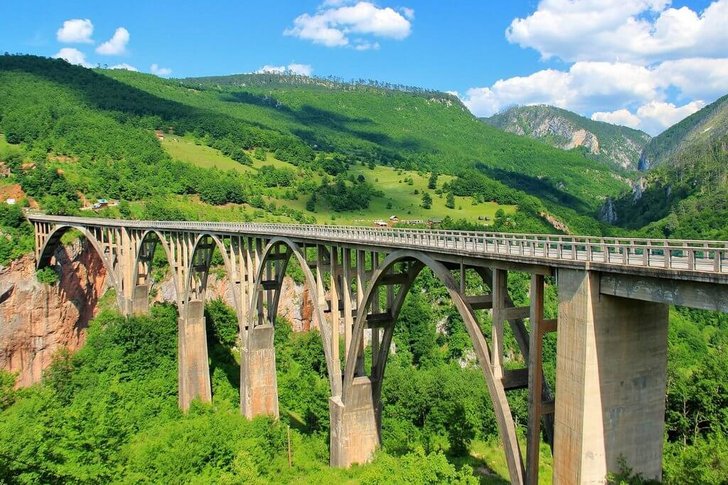
Millennium Bridge (Podgorica)
The length of the bridge is 140 meters. It is laid across the Moraca River. Construction cost 7 million euros. With this money, a grandiose structure was built - a cable-stayed bridge with a pylon 57 meters high, 24 counterweights and 12 cables. The bridge got its name as a symbol of the city's entry into the new millennium. The modern architectural monument is popular with tourists, it is called one of the most photogenic bridges in Europe.
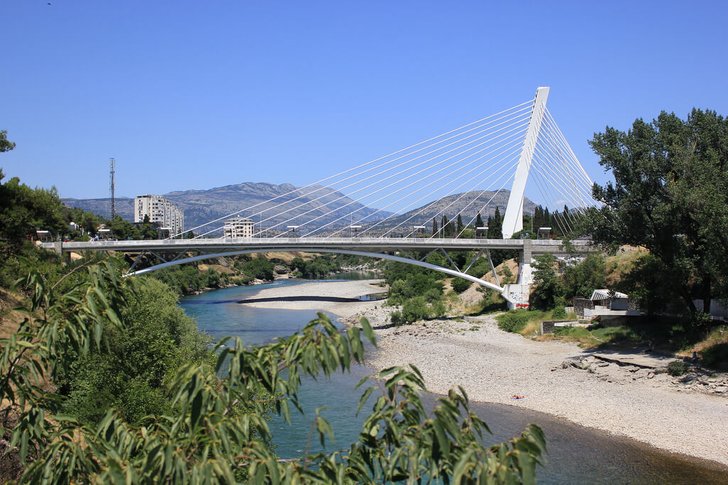
Porto Montenegro (Tivat)
Luxury yacht complex. Designed for 600 yachts of standard sizes. It is also capable of accommodating 150 yachts over 150 meters long. It is an analogue of the city for yacht owners. It has all the necessary facilities for recreation - hotels, a museum, restaurants, a sports complex, an art gallery. The place for construction was not chosen by chance - the beauty of the Bay of Kotor is ideal for creating a luxurious yacht complex.

Mogren beach (Budva)
One of the best places for a beach holiday in the country. Fine and clean sand, clear water - this is especially appreciated by tourists. The beach is clean, the territory is constantly monitored. The crystal water will be appreciated by snorkellers. A pine forest grows around the sandy rocks. It saves from the rays of the scorching sun. Near the beach there are many hotels and restaurants, the necessary beach infrastructure is equipped.
